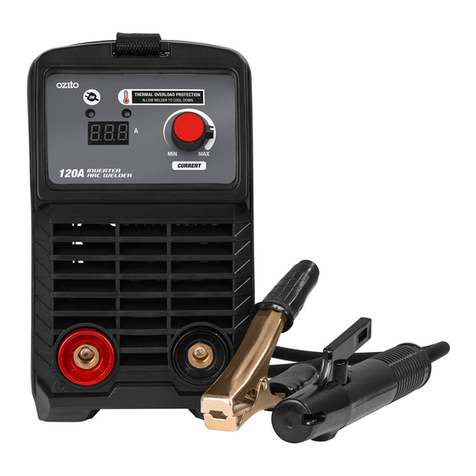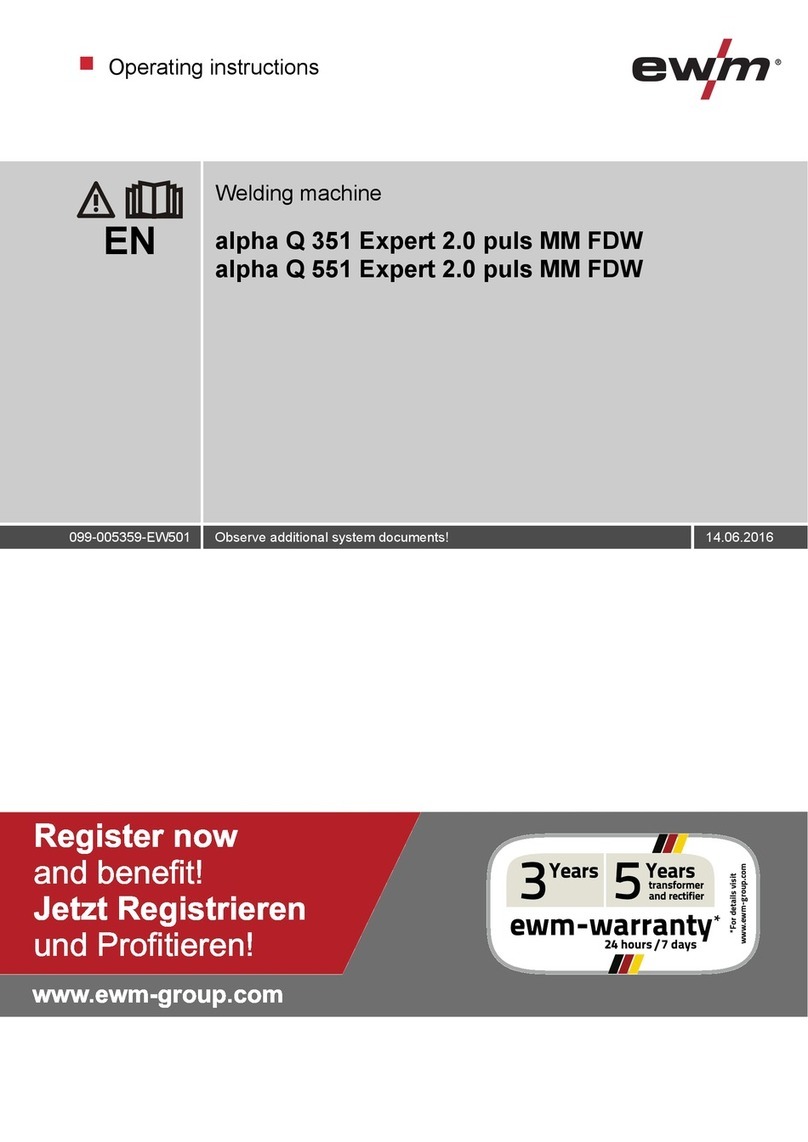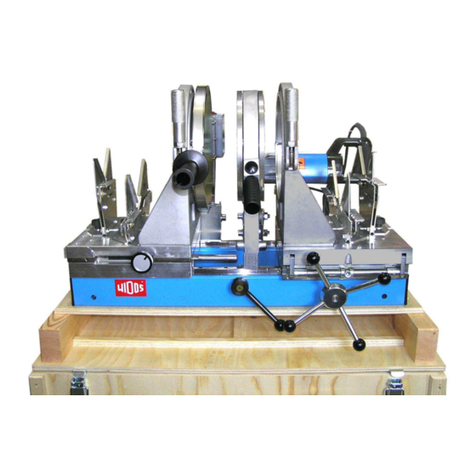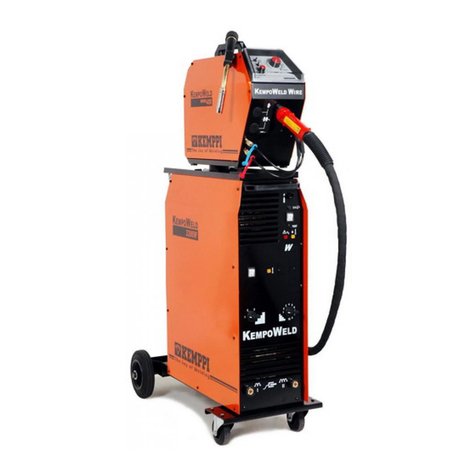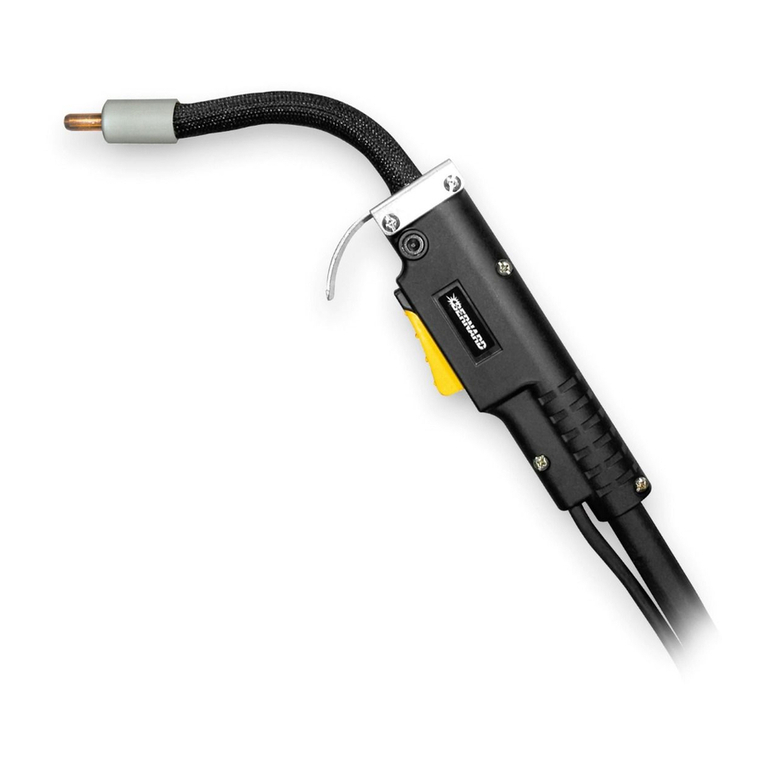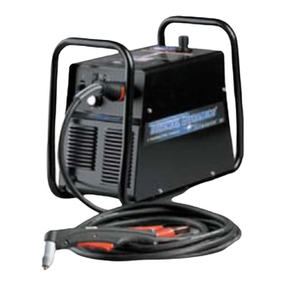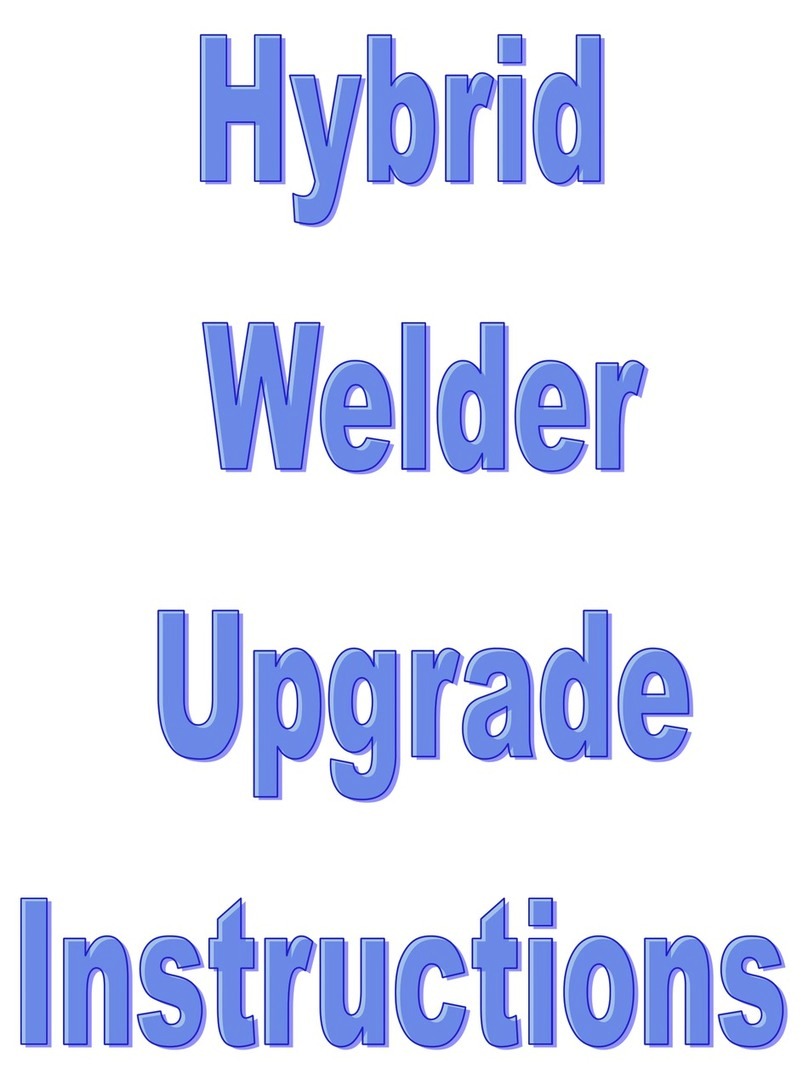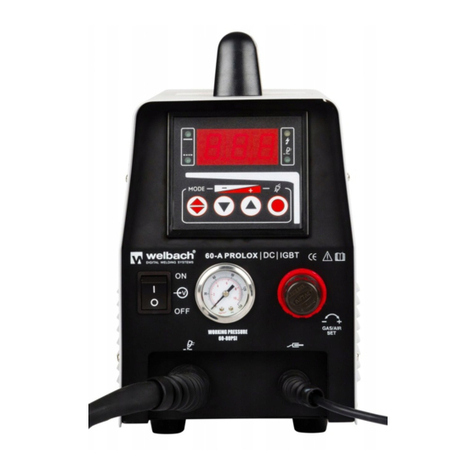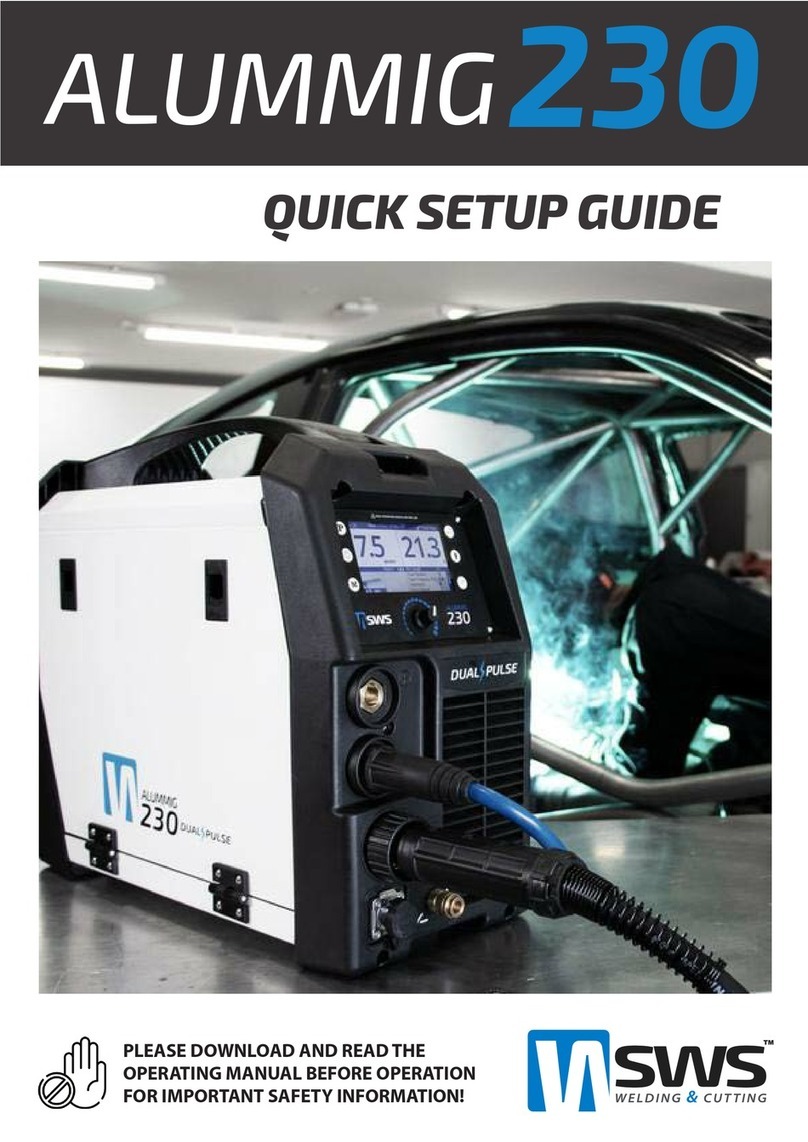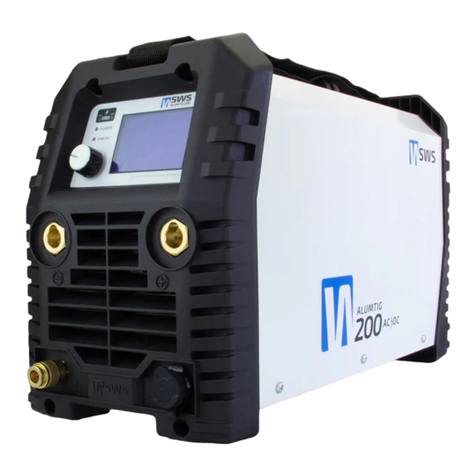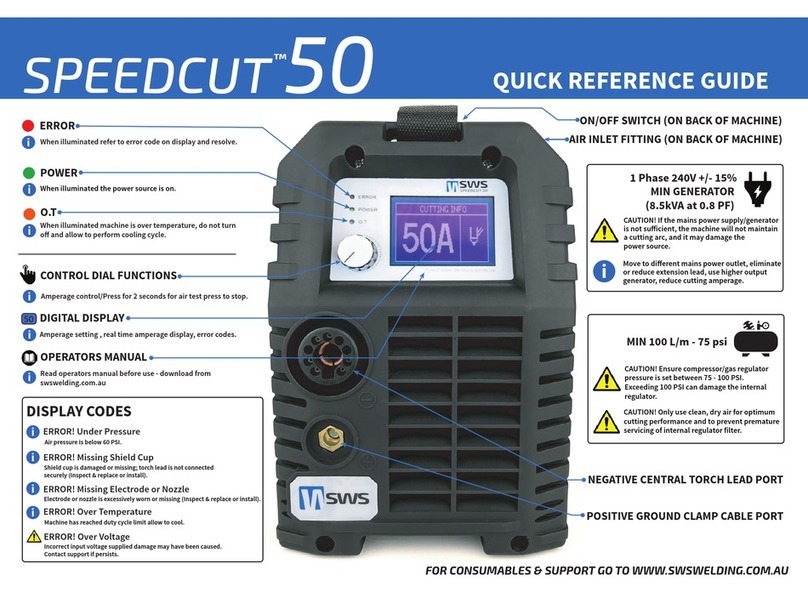GTAW (TIG)
3.3 Concentrated Arc
The precise nature of the TIG welding arc allows a high level of control of heat input to the metal resulting in
a narrow HAZ (heat‑aected zone). This high concentration of heat is a significant advantage when welding
metals with very high heat conductivity such as aluminium and copper. A narrow HAZ is an advantage
because the base metal has undergone a change due to the very fast heating of the arc and rapid cooling
rate. The HAZ is where the welded joint is the weakest and is the area that is most likely to break under
destructive testing.
3.4 Slag Free
Unlike stick welding, there is no need for flux with TIG. Therefore, there is no slag to obscure vision of the
weld pool. The finished weld also does not have the layer of slag le.
3.5 No Sparks and Spatter
In the TIG welding process, there is no transfer of metal across the arc, so there is no molten globules of
spatter to deal with and no sparks produced if the metal being welded is free of contaminants. TIG is also
very quite compared to stick or MIG welding and the only time any real noise will be present is when using a
pulsed arc, or AC welding is being done.
3.6 No Smoke or Fumes
TIG welding on its own does not produce smoke or dangerous fumes. But if the base metal contains coatings
or elements like lead, zinc, nickel or copper that do produce fumes, these must be dealt with as in any
electric arc welding process. If the workpiece has oil present, paint, grease or other contaminants, harmful
smoke and fumes will always be made as the heat of the process burns them away. It is of the utmost
importance when TIG welding to clean and prepare your meals with diligence.
3.7 TIG Disadvantages
The major disadvantage of the TIG welding process is the slow and low filler metal deposition rate. Another
disadvantage is that the skills needed to accomplish a beautiful sound weld can be diicult to learn, and
requires a good deal of practice to become skilled. The higher amounts of ultraviolet rays from the arc also
causes the formation of ozone and nitrous oxides. Extra care should be taken to protect skin with the proper
PPE with the correct shade welding filter and helmet.
3.8 Process Overview
TIG is a very clean process, and it is a great choice from a welders point of view because of the reasons
above. For an excellent result, it is a must that the welder maintains sound welding conditions by always
properly cleaning the material, using cleaning and using clean filler metal, clean gloves, and ensuring to
keep oil, dirt and other contaminants away from the welding area. Cleanliness is one of the most important
factors with TIG, especially on aluminium and magnesium. These metals are more prone to contaminants
than ferrous metals the porosity in aluminium welds has been known to be caused by hydrogen this is
why it is the most necessary to completely remove hydrogen containing elements such as moisture and
hydrocarbons that reside in the form of oils and paint.























